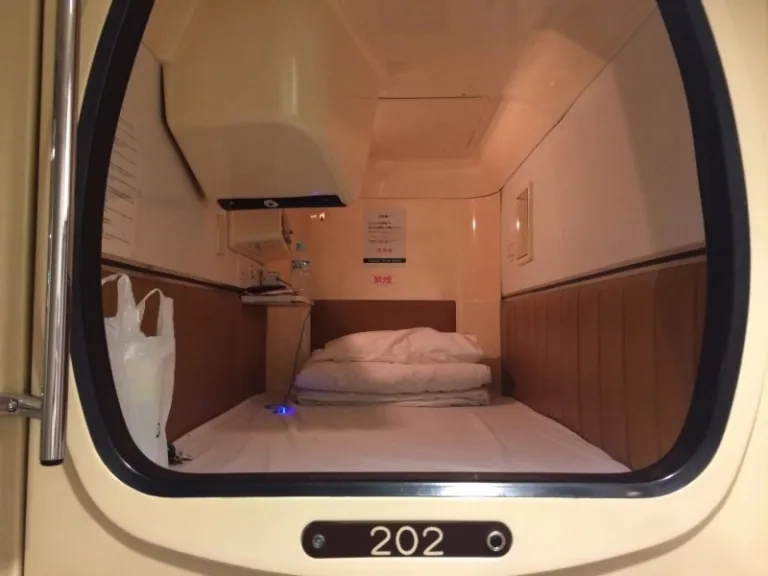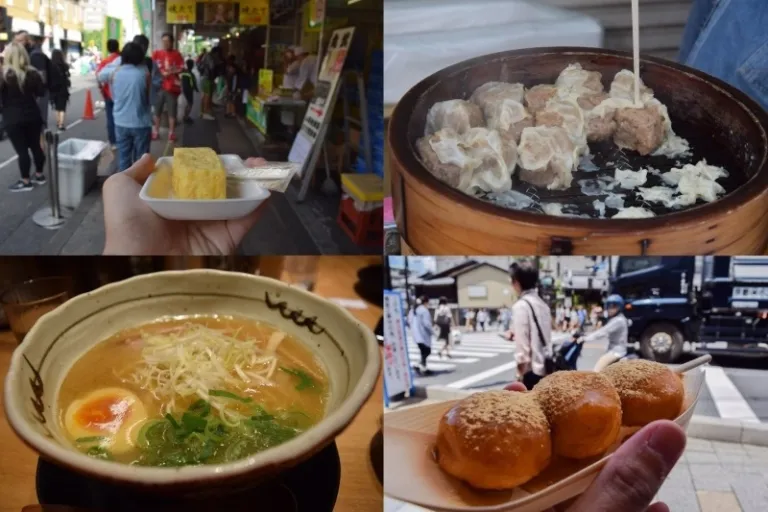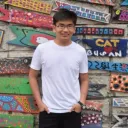想要趁着周末或公共假期在国内旅游, 但只能想到槟城极乐寺、 吉隆坡双峰塔、 热浪岛, 又觉得这些地方太主流、 人又多、 而且没新鲜感了吗? 今天,小编就要来向大家介绍一些马来西亚可媲美国外、 鲜为人知的冷门景点吧·!
A Malaysian Guide to Budget Travel in Japan [Updated 2025]

Without a doubt, Japan remains a dream destination for many Malaysian travellers. However, the common refrain persists: "Japan is very expensive, leh!" While it's true that Japan can be a costly destination, the good news is that budget travel is still absolutely achievable with some smart planning.
Interestingly, since I first wrote this article all those years ago, the Japanese Yen has significantly weakened against the Malaysian Ringgit. Back then, the exchange rate was around RM1 = ¥27.8. As of early May 2025, the rate hovers around RM1 = ¥34 ! This means your Ringgit will stretch even further now, making that budget trip to Japan even more attainable!

Long story short, in 2017, my friend and I managed to travel Japan for 12 days (10 excluding travel days) for less than RM5,500 each, including flights and accommodation. And with the current exchange rate, you might even be able to do it for less! Let me show you how:
Note: All Ringgit Malaysia (RM) conversions in this updated article are based on an approximate exchange rate of RM1 = ¥34 as of early May 2025. Prices will be rounded off for easier estimation.
How much does a flight to Japan cost?
Our initial strategy of taking a budget flight via Hong Kong proved to be a significant cost-saver.
In 2017, we flew from Kuala Lumpur to Hong Kong with AirAsia and it cost us around RM250 each. However, given that Hong Kong Express recently launched a new Penang - Hong Kong route, you may even be able to score a better deal if you stumble on a promo.
Our flight from Hong Kong to Tokyo Narita International Airport (direct) was about RM400. Again, prices fluctuate, but budget carriers like HK Express or Jetstar Japan often have competitive fares, although prices for flights, in general, are much higher these days.
Estimated 2025 airfare: Assuming you're travelling during the shoulder seasons like September, your airfare to Japan (single trip) could be between RM800 to RM900, depending on how you travel. Meaning, 8 years later, flying from Malaysia to Japan is around 20 to 30% more costly, though not too expensive if you can find promos.
The key here is still booking early (ideally 1-3 months in advance) and considering weekday flights, which tend to be cheaper. Don't forget to explore direct options with AirAsiaX to Osaka (Kansai International Airport) as well, as they sometimes offer good deals.
In short, cost so far: Malaysia to Hong Kong (RM300 to Rm450); Hong Kong to Tokyo (RM500 ); total = around RM800.
TripZilla Tip: Use flight aggregator sites like Skyscanner to find cheap tickets for flights. Bear in mind, sometimes, it's cheaper to fly to/from Osaka than Tokyo.
Cost of public transport in Japan
The Japan Rail Pass remains a point of discussion for budget travellers. It offers unlimited rides on most JR lines, including Shinkansen bullet trains.
A 7-day Japan Rail Pass is currently priced at ¥50,000 (approximately RM1,470) for adults. Prices have increased since 2017.
Get this pass IF you plan extensive travel across Japan using the bullet trains. A round trip between Tokyo and Kyoto can easily cost upwards of ¥28,000 (around RM825) these days, making the pass worthwhile for such itineraries. You can purchase it online through the official JR Pass website or licensed overseas agents before your trip.

However, just like my friend and I in 2017, you might find that a regional pass suits your itinerary better. Since we planned to spend 4 days in Tokyo, 3 in Kyoto, and 3 in Osaka, the JR Kansai Wide Area Pass was a more economical choice for us.
The JR Kansai Wide Area Pass (5-day validity) now costs ¥12,000 (approximately RM350) for adults. The price has seen a slight increase.
This pass covered our travel within the Kansai region perfectly. For our travel in Tokyo, we had to purchase separate tickets.
The train ticket from Narita Airport to Ueno cost us about ¥2,500 (around RM73.5). The price in Japanese Yen has remained the same, so it's actually cheaper now.
Average subway and metro tickets in Tokyo now range from ¥180 (¥10 increase in 2023) to ¥300 (approximately RM5 to RM9) per ride. Over four days, using a combination of subway and walking, we likely spent around ¥1,200 (approximately RM45) per day.

Our most significant single transport cost in Tokyo was getting to Kyoto. Since the Shinkansen was too expensive without a JR Pass, we opted for a highway bus.
Highway bus fares between Tokyo and Kyoto can range from ¥4,000 to ¥12,000 (approximately RM117 to RM350) depending on the coach class and time of travel. Our early morning bus cost ¥5,400 (approximately RM160). Night buses are still a great option to save on accommodation costs. Prices have remained largely the same:

Let's compare how much we spent in 2017, and how much it would cost in 2025:
2017: RM328 (Kansai Wide Area Pass) + RM90 (train from airport to hostel) + RM170 (metro and subway fares in Tokyo for 4 days) + RM195 (bus to Kyoto) = RM783
2025: RM350 (Kansai Wide Area Pass) + RM75 (train from airport to hostel) + RM180 (metro and subway fares in Tokyo for 4 days) + RM160 (bus to Kyoto) = RM765
About roughly the same, I would say. Not bad, after an 8-year gap!
Important Update: Welcome Suica and Pasmo Passport
Since the global chip shortage, the regular Suica and Pasmo IC cards faced temporary sales suspensions. However, two new cards have emerged for tourists: the Welcome Suica and the Pasmo Passport. These prepaid cards offer similar convenience for contactless payment on most public transport in Tokyo and other regions.
They typically have a validity period (e.g., 28 days for Welcome Suica) and might have slightly different designs or promotional offers. It's worth researching these options closer to your travel dates, as they can simplify local travel significantly.
Accommodation

Budget-friendly accommodation options in Japan remain diverse and interesting. Our strategy of using capsule hotels, ryokans, and guesthouses proved to be very economical.
We spent a total of RM1570 in 2017, which translates to ¥54,165. Divided by two people and 11 nights, that's roughly ¥2,462 (approximately RM71) per person per night. Throughout our entire journey, we only stayed in capsule hotels (Tokyo), ryokans (Kyoto) and guesthouses (Osaka). You might think that we skimped out on luxury, but looking back, I don’t feel like we did. While we didn’t get the 5-star hotel treatment, we got to experience a raw, humble taste of Japan’s travel culture you would never get if you travelled with a tour group.
Let's see if these prices are still possible or even realistic, especially given the new Tourist Tax:
Capsule Hotels in Tokyo: You can still find capsule hotels for as low as ¥2,500 – ¥4,000 (approximately RM75 – RM120) per night. They remain a clean, private, and affordable option.
Ryokans in Kyoto: Prices for budget-friendly ryokans can range from ¥3,500 – ¥6,000 (approximately RM102 – RM180) per person per night, depending on location and amenities. The experience of staying in a traditional Japanese inn is still highly recommended.
Guesthouses in Osaka: Dormitory beds in guesthouses are still a fantastic budget option, often ranging from ¥2,000 – ¥4,000 (approximately RM75 – RM120) per night. The social atmosphere and local tips are invaluable. In fact, my favourite place was our guesthouse in Osaka. We shared an 8-bed dormitory with other travellers from around the world. The staff were so friendly that it actually felt a little bit like being at home. They also organised social activities for the occupants, such as takoyaki night, and international exchange parties, where you all go out to a nearby bar and socialise over drinks.
Internet and Manga Cafes: These remain a viable option for very budget-conscious travellers, with overnight stays potentially costing around ¥2,000 – ¥3,500 (approximately RM75 – RM103).

Using Booking.com, we realised that of all the accommodation we used in 2017, only our Kyoto guesthouse, Santiago Guesthouse, is still available. Price for 3 nights was listed as around RM350, which is slightly higher than in 2017 but not too far off.
Let’s do a quick comparison of expenses so far:
2017: RM650 (air fare) + RM783 (transport) + RM785 (accommodation) = RM2,218.
2025: RM800 (air fare) + RM765 (transport) + RM1000 approx. (accommodation) = RM2,465.
Again, slight increase overall.
Things to eat in Japan: Food Budget

The food in Japan is absolutely delicious. I swear, those Japanese restaurant chains in Malaysia can’t even compare. But of course, if you’re travelling on a budget, you might think that food in Japan is expensive.
Well, it really depends on how you enjoy food in Japan. The food culture there is so diverse that you can find something yummy at almost any corner of the street.
Donburi (Japanese rice bowl dish) is one of the most economical food options in Japan. You can find them in chain stores like Yoshinoya and Sukiya. These places are super packed during lunch hour as people flock to them for a tasty, filling meal.
Menus in these places often come in dual languages (English and Japanese) and a typical meal in 2025 costs between ¥450 and 900 (RM13.50 to RM27), depending on portion size and add-ons. A quick check on the Yoshinoya website shows that my beloved kare gyudon was now around ¥600 (approximately RM18). Back then, it was ¥550.

Another affordable option is to eat at a yatai. I think we, as Malaysians, will like this the most. Yatai are essentially food carts that you typically find in night markets. Dotonbori in Osaka and areas around Tsukiji Outer Market in Tokyo are still fantastic for delicious street food. Prices for ramen, yakitori, takoyaki, and tempura will vary but are generally quite reasonable. Expect to spend around ¥500 – ¥1000 (approximately RM15 – RM30) per item/serving in 2025.
The most economical way to eat in Japan is still by getting food from convenience stores. The quality and variety at Lawson, Family Mart, and 7-Eleven remain impressive. Bento boxes, sandwiches, onigiri, and oden might now average between ¥200 to ¥500 (approximately RM6 to RM15).

If you're looking for some sushi (of course you are!), I recommend visiting a standing sushi bar or a more casual establishment. These are easily available in Tokyo's busy Shibuya and Shinjuku districts. Depending on the type of sushi, each piece costs between ¥100 to ¥500 (RM3 to RM15), so it's likely one of the more expensive culinary experiences you'll have in Japan, but it's well worth it!
Meanwhile, a ramen bowl costs around ¥600 to ¥1,200 (RM18 to RM36), and a meal at an Izakaya with drinks costs around ¥2,000 (RM60). Take note that most establishments are slightly pricier during dinner service than lunch.
In total, we spent about ¥30,000 (RM1,150) on food in 2017, about RM95 per day — This is a rough estimate, and there were days that we spent far less. If we go by prices today, it would probably be closer to around ¥36,000 to ¥40,000 (RM1,065 to RM1,190). Not too much difference, thanks to the better rates these days.
Things to do
Some of you might not believe this, but for attractions (things to see, do, etc.), we spent less than ¥10,000 (RM362) in 2017. That's because many of Japan’s most iconic sites were free and still are today!
In fact, most of Japan’s famous shrines and temples offer free entry. The only attractions we visited that required an entrance fee were for the inner sections of Osaka Castle (¥600 – RM22) and Himeji Castle (¥1,000 – RM36). For now, prices remain the same. And even then, you can decide not to pay anything and still be able to enjoy the beautiful scenery outside! Check out some of the wonderful places you can visit FOR FREE:

Clockwise from left: Dotonburi, Osaka: FREE; Arashiyama Bamboo Forest, Kyoto: FREE; Nara Park: FREE; Sensoji Temple, Tokyo: FREE

Fushimi Inari: FREE

Osaka Castle: FREE, entry fee only for the castle interior
So, how did we manage to spend ¥10,000 (RM362) on attractions if everything was free? Well, ¥7,900 (RM286) of it was for our single-day pass into Universal Studios Japan. The rest of the money we spent on the gaming arcades in Akihabara, Tokyo.
The price of tickets for Universal Studios seems to have changed and currently costs around ¥8,500 (RM250 - thank goodness for price conversion). However, it's better to book your tickets online through authorised agents as they could offer even cheaper package deals, including entry to the new Nintendo World attraction!
Time for a check on our budget using 2025 prices: RM5,500 – RM2,465 (flight, transport and accommodation) – RM1,190 (food) – RM300 (attractions) = RM1,545 remaining.
P.S., we didn’t get a chance to, but if you’d like to visit some concept cafes in Tokyo, like owl cafes or maid/robot cafes, setting aside ¥3,000 (RM90) should be more than enough. Also, if you want to catch an AKB48 concert, tickets cost around ¥3,400 (RM100) at the AKB48 Theatre in Akihabara, Tokyo.
Shopping

Last but not least, shopping! Depending on how you shop and what you buy, this could actually be your biggest expense! Japan is a shopper's paradise, especially for anime and unique souvenirs.
Anime figures in Akihabara and Nipponbashi might range from ¥3,500 to ¥18,000+ (approximately RM105 to RM522+) depending on quality and rarity. Akiba Cultures Zone remains a great place for pre-loved and potentially cheaper options.
For Japanese souvenirs like matcha, wasabi, and snacks, supermarkets, pharmacies (drug stores), and convenience stores are still your best bet. Prices might have slightly increased, but you can still find many items for under ¥350 (approximately RM10). Matcha might now average around ¥500 (approximately RM14).
100 yen stores (now often 110 yen including tax) and neighbourhood markets are still fantastic for affordable chopsticks, tableware, and trinkets.
Estimated 2025 Shopping Budget: Keeping our initial budget of RM1,000 from 2017 for souvenirs should still be reasonable, especially if you're mindful of your anime figure purchases.
So, RM5,500 – RM2,465 (flight, transport and accommodation) – RM1,190 (food) – RM300 (attractions) - RM1,000 (shopping) = RM545 remaining.
But Wait!
Some of you might have noticed: I didn’t mention anything about return tickets! That’s because instead of going home, my friend and I hopped on another budget airline (Peach Aviation) and flew to Busan, South Korea, from Osaka (RM280).
But if you’re looking to head home to the sweet smell of nasi lemak and teh tarik, you can easily get cheap flights from Japan to Kuala Lumpur for less than RM1000 on some budget airlines.
With the addition of the flight tickets home, the final expenditure would still come up to just under RM6,000 in 2025, so it's definitely a marked increase, but depending on how you travel, it's still possible to visit Japan on a budget of RM5,500!
The Land of the Rising Sun Awaits
So there you have it! Budget travel in Japan in 2025 is not only possible but potentially even more affordable thanks to the current exchange rate. With a bit of smart planning, prioritising your spending, and embracing local budget-friendly options, your dream trip to the Land of the Rising Sun awaits!
Also read: The Malaysian Guide to Budget Travel in South Korea
Published on
About Author
RECOMMENDED READS
本地旅游好好玩! 马来西亚 10个 2025 必游的仙境 【Pulau Langkawi爆红住宿TOP 8】超高颜值的酒店,照片请来一波! 9月16日。。。约吗?
【亚洲跨年烟花TOP 8】带上家人和另一半欣赏爆炸式的浪漫! 每年的跨年大集会, 除了有歌舞升平的好气象之外, 还会有各种烟花大会, 迎接2020的到来~ 为你推荐这些超吸睛的烟火会, 还不赶快带上你最亲爱的去欣赏这份免费的浪漫情怀?!
【冬季篇】日本必去打卡的秘境TOP 10✅ 日本, 是亚洲一个神奇的旅游胜地。 但凡去过一次, 就会上瘾, 然后就会想要探索那里的春夏秋冬。 日本的冬季, 可以达到零下的温度, 甚至有很多越冷越受欢迎的景点。值得一提的是, 日本的冬季集浪漫、 萧条、 迷人为一身。 你也可以趁着冬季来到北海道滑雪, 或是泡一个美美的温泉! 无以伦比的旅行就此开始。
【学生党付得起的价位】新加坡超美味的豪华美食清单TOP 8! 以前总听别人说新加坡的食物不好吃, 那是因为不会吃吧! ~当然, 要享受到顶级的服务和美食, 钱包就一定不能太省啦! 毕竟马币兑新币汇率真的太高了。 不过, 为了吃真的不能省。 如果接下来想逗女朋友开心, 或是想慰劳一下家人, 就去邻国趴趴走吧!
RECENT ARTICLES
胡志明市逛街攻略:10 家必逛的精品店与购物天堂! 真的可以带上空的行李箱到胡志明了!
首尔圣水洞 18个必逛打卡点:潮牌景点、爆红美食完整攻略! 18个必逛打卡点,保证让你逛到尽兴!
日本将调高游客离境税和签证费:大马旅客需注意的事项 趁着还没调高之前,到日本旅游咯!
2025 年马来西亚旅游业“火”出圈,游客量称霸东南亚! 是时候骄傲一下了!
Scoot 新增印尼四航点:马来西亚出发单程机票最低 RM239 起! 大马人又有更多便利和优惠啦!

